Have you ever encountered the term "Pocket scrapbooking" and wondered what that is? Have you seen kits with strangely similar size of cards and asked yourself why those designers are always using elements that are so similar instead of being unique to their own style? Let's have a look at Pocket Scrapbooking.
What is it?
When scrapbooking became popular, people would use a blank support and add photos, papers and decorations. That is how a lot of traditional paper scrapbookers would create their layout. In 2008, Becky Higgins created a kit called Project 365 that obviously focussed on the idea of a photo a day for a year. This kit, which was a tangible product, consisted of plastic page protectors with individual pockets of standard size, that could be used to simply insert photos and decorative cards. No glue required!
One of the great advantages and features of this type of scrapbooking is speed and ease. The pockets being of standard size, and the cards matching that size, it was quick for someone to slip in the photos, choose cards, handwrite some details and add those to another pocket. No need to fiddle with a template, scissors, glue, etc. This has been quite popular for quite some time.
In order to keep some standard size pockets for matching cards, there are only a limited number of different pocket pages that are created which can yield a fairly uniform look to an album. For example, you can buy this page (on Scrapbook.com):
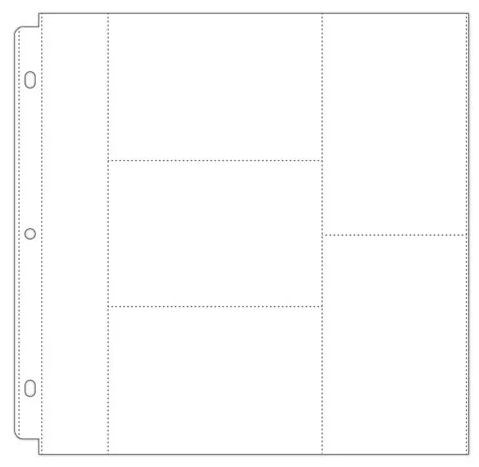
And create this layout:
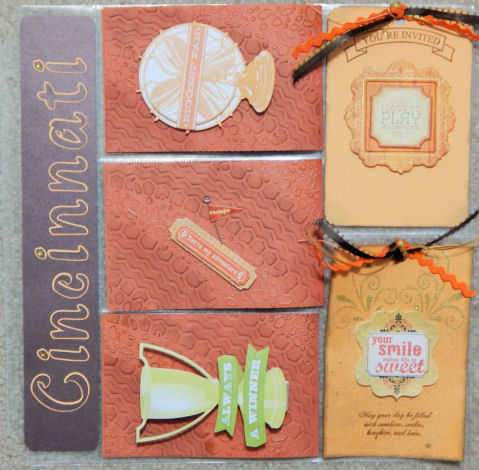
Digital Pocket Scrapbooking
Although this type of scrapbooking was meant for the traditional users, who had papers and scissors to work with, this trend also touched the digital scrapbookers. Over time, digital kit designers included cards that would match the standard size for Pocket scrapbooking since they knew that some users would print them and then insert those cards in their page protectors. And since those cards were available in digital kits, digital scrapbookers started using a similar format, making the whole process of creating a page, faster.
Using a pocket-scrapbooking format would typically be a bit faster than starting from scratch as you don't have a million possibilities. The end result will be mostly like blocks in a specific arrangement, and you can replace each one by either a photo, a paper, a decorative element or journaling. Shapes are limited to rectangles in most cases.
However, since the digital scrapbook layout does not really rely on physical pockets, you can allow yourself to add elements elsewhere, overlapping some "pockets" or even changing the pocket sizes. Here is an example of a digital layout using the pocket scrapbooking format:
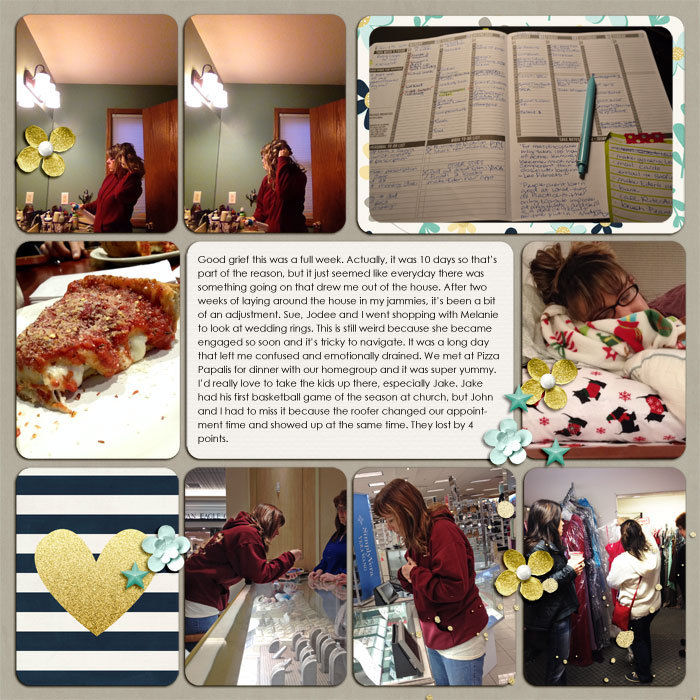
As you can see, the fact that the elements are not constrained inside physical pockets, the scrapper was able to add those little flowers where it would be impossible to have them if using plastic pockets, but the overall look is similar to what you would otherwise get with the page protector.
With the flexibility of the digital medium, the size and shape of the individual "pockets" can be modified to, and yield more customized layouts too.
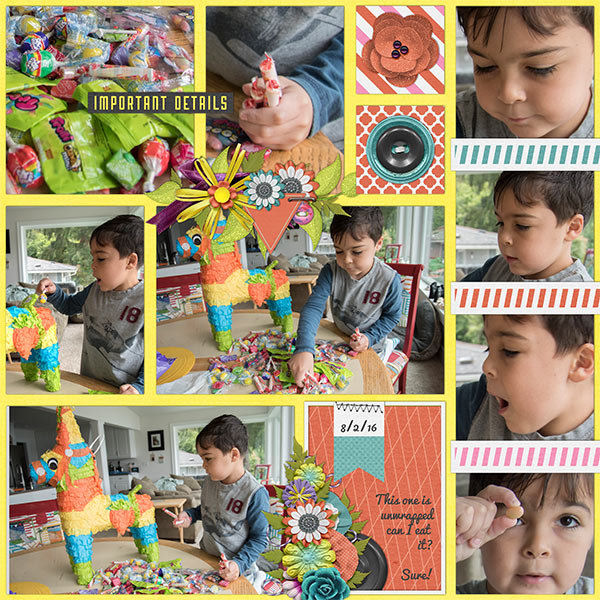
Replicating the plastic pockets
If you like the look of the plastic pockets, even if you are working on a digital project, you can get some elements that are going to simulate those pockets, and you can then "insert" your photos, cards or elements inside those pockets.
But if you want to create your own pocket pages, possibly with different size for the pockets, you can get the script Plastic Pocket Page. This will let you use the principle of the Pocket Page scrapbooking, but with a totally new format, that will be your own.
Conclusion
Although the trend of Pocket scrapbooking started with physical plastic page protectors and ready-made cards, this has nicely influenced digital scrapbookers too. Although this type of scrapbooking might be faster and simpler for some, others might find it fairly limited in their creativity. But like most things related to scrapbooking, there is no real right or wrong way to do it. And the digital scrapbooking still allows you to expand beyond the boundaries of the plastic pockets.
Will you try this? If so, remember to share your projects in our forum for others to get inspired.

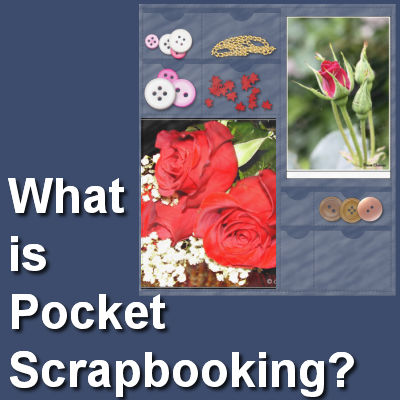












1 thought on “What is Pocket Scrapbooking?”
I’ve used your translucent envelope and plastic pocket tutorials in projects. Not realizing that there is such a thing as pocket scrapbooking. I’ve used those envelopes and pockets as elements, slipping a photo partially inside, and tilted, especially the translucent envelope.